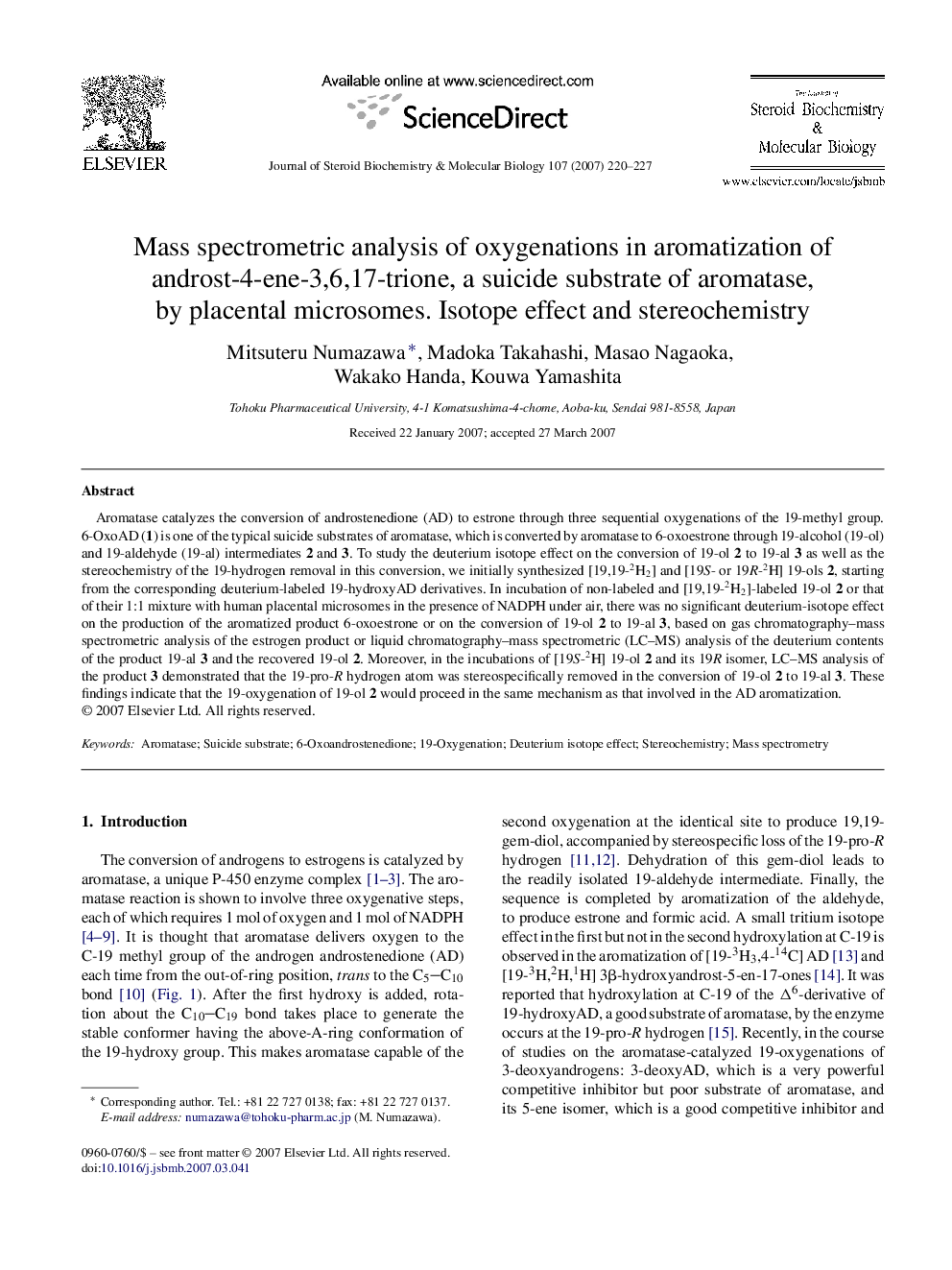| Article ID | Journal | Published Year | Pages | File Type |
|---|---|---|---|---|
| 1992989 | The Journal of Steroid Biochemistry and Molecular Biology | 2007 | 8 Pages |
Aromatase catalyzes the conversion of androstenedione (AD) to estrone through three sequential oxygenations of the 19-methyl group. 6-OxoAD (1) is one of the typical suicide substrates of aromatase, which is converted by aromatase to 6-oxoestrone through 19-alcohol (19-ol) and 19-aldehyde (19-al) intermediates 2 and 3. To study the deuterium isotope effect on the conversion of 19-ol 2 to 19-al 3 as well as the stereochemistry of the 19-hydrogen removal in this conversion, we initially synthesized [19,19-2H2] and [19S- or 19R-2H] 19-ols 2, starting from the corresponding deuterium-labeled 19-hydroxyAD derivatives. In incubation of non-labeled and [19,19-2H2]-labeled 19-ol 2 or that of their 1:1 mixture with human placental microsomes in the presence of NADPH under air, there was no significant deuterium-isotope effect on the production of the aromatized product 6-oxoestrone or on the conversion of 19-ol 2 to 19-al 3, based on gas chromatography–mass spectrometric analysis of the estrogen product or liquid chromatography–mass spectrometric (LC–MS) analysis of the deuterium contents of the product 19-al 3 and the recovered 19-ol 2. Moreover, in the incubations of [19S-2H] 19-ol 2 and its 19R isomer, LC–MS analysis of the product 3 demonstrated that the 19-pro-R hydrogen atom was stereospecifically removed in the conversion of 19-ol 2 to 19-al 3. These findings indicate that the 19-oxygenation of 19-ol 2 would proceed in the same mechanism as that involved in the AD aromatization.
